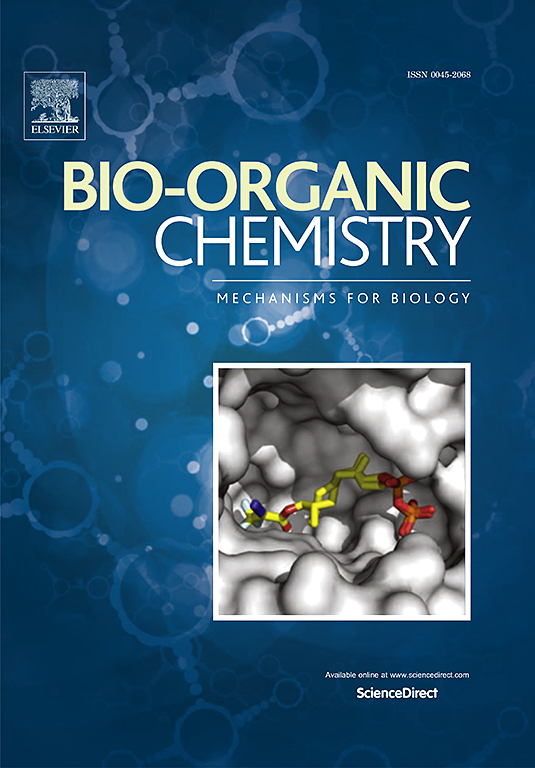Targeted discovery of diterpene compounds ostamycins with anti-influenza a viral activity from a deepsea-derived Streptomyces strain
IF 4.5
2区 医学
Q1 BIOCHEMISTRY & MOLECULAR BIOLOGY
引用次数: 0
Abstract
Heterologous expression of a nonconventional terpene biosynthetic gene cluster from the deepsea-derived Streptomyces amphotericinicus DS22–01 led to the production of a novel cyclic diterpene, ostamycin A (1). Anti-influenza A virus activity evaluation revealed that compound 1 showed significant activity with an IC50 value of 4.72 μM, which was much stronger than that of the positive control ribavirin (IC50 = 20.80 μM). Inspired by its intriguing activity, yield optimization was achieved through a combined approach involving promoter engineering and codon modification in a stepwise manner. This strategy led to a ∼ 13-fold increase in the production of ostamycin A (1), as well as the concurrent accumulation of another novel cyclic diterpene, ostamycin B (2), which also displayed anti-influenza A virus activity with an IC50 value of 195.59 μM. The planar structures and stereochemistry of compounds 1 and 2 were established through extensive MS and NMR spectroscopic analyses together with ECD calculations. Further investigations revealed that compound 1 inhibits the influenza A virus (A/Puerto Rico/8/34) replication by directly targeting the nucleoprotein (NP). These findings highlight compound 1 as a promising lead for the development of novel influenza virus inhibitors.

求助全文
约1分钟内获得全文
求助全文
来源期刊

Bioorganic Chemistry
生物-生化与分子生物学
CiteScore
9.70
自引率
3.90%
发文量
679
审稿时长
31 days
期刊介绍:
Bioorganic Chemistry publishes research that addresses biological questions at the molecular level, using organic chemistry and principles of physical organic chemistry. The scope of the journal covers a range of topics at the organic chemistry-biology interface, including: enzyme catalysis, biotransformation and enzyme inhibition; nucleic acids chemistry; medicinal chemistry; natural product chemistry, natural product synthesis and natural product biosynthesis; antimicrobial agents; lipid and peptide chemistry; biophysical chemistry; biological probes; bio-orthogonal chemistry and biomimetic chemistry.
For manuscripts dealing with synthetic bioactive compounds, the Journal requires that the molecular target of the compounds described must be known, and must be demonstrated experimentally in the manuscript. For studies involving natural products, if the molecular target is unknown, some data beyond simple cell-based toxicity studies to provide insight into the mechanism of action is required. Studies supported by molecular docking are welcome, but must be supported by experimental data. The Journal does not consider manuscripts that are purely theoretical or computational in nature.
The Journal publishes regular articles, short communications and reviews. Reviews are normally invited by Editors or Editorial Board members. Authors of unsolicited reviews should first contact an Editor or Editorial Board member to determine whether the proposed article is within the scope of the Journal.
 求助内容:
求助内容: 应助结果提醒方式:
应助结果提醒方式:


